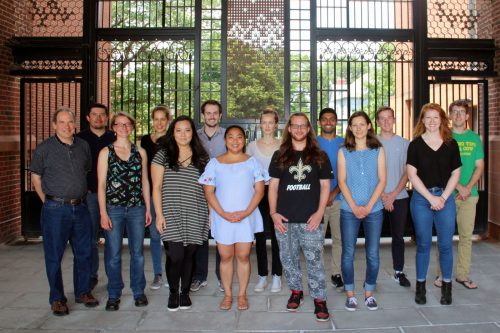Professor Jim Mayer of Yale University has recently received the 2018 American Chemical Society Award in Inorganic Chemistry. This award is one of the leading distinctions within the field of inorganic chemistry, honoring his fundamental research in hydrogen atom transfer. Through his extensive research, Mayer developed a new framework describing the coordinated movement of protons and electrons that has now been widely adopted in both organic and inorganic chemistry.
Although hydrogen atom transfer is an established organic chemistry reaction, its foundation in the field of inorganic chemistry has been relatively underdeveloped. Chemists previously associated electrical energy with the movement of electrons alone and have only fairly recently started to understand how electrons and protons often move together to store energy in chemical bonds, including fuels and carbohydrates. How exactly does this happen? Mayer hoped to better understand the chemical “inventory” of electrons and protons as well as the mechanisms of these processes.
A radical, which is a molecule that has at least one unpaired electron, is often highly reactive.
It is widely known that the instability and peculiar properties of radicals greatly affect organic chemistry reactions, but Mayer demonstrated that varying bond strengths, not radicals, play a more influential role in understanding and predicting a whole class of reactions for inorganic chemistry. For instance, in order for the transfer of a hydrogen atom to be favorable, the strength of the new bond must be stronger than the original bond. Despite this difference between radicals and bond strengths, Mayer recognized that hydrogen atom transfer can and should be treated in a similar way for both organic and inorganic reactions.
At first, it may seem difficult to apply Mayer’s atomic-level research to the real world. However, it has great implications in envisioning new energy systems. Today, burning hydrocarbons is an inefficient use of fuel because most of the chemical potential energy is wasted. Rather, using a fuel cell to separate hydrogen into protons and electrons could be remarkably more efficient than internal combustion. Imagine that, instead of charging the battery in your laptop, you could simply replace a vial of ethanol that could then power your electronics for more than a day. This ethanol would be easily derived from plants, thereby being much more sustainable. The challenge of converting chemical energy directly to electricity with more efficiency is a world-changing problem that we are a step closer to with this can now potentially be solved with greater understanding of hydrogen atom transfer.
Mayer’s research has brought to light the previously unrecognized role of protons in chemical reactions, fundamentally changing the way chemists view both organic and inorganic chemistry. Mayer hopes to move forward with his research from molecules to materials, connecting to the realm of physics and expanding his ideas beyond the field of chemistry. “What was surprising to people twenty years ago is now a part of everyone’s thinking,” Mayer said. “It would be very cool to see these ideas widely adopted in multiple fields.”

